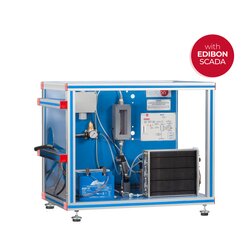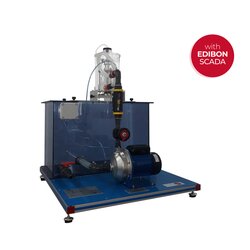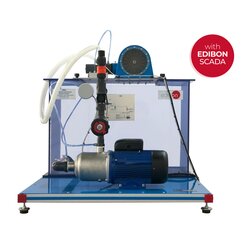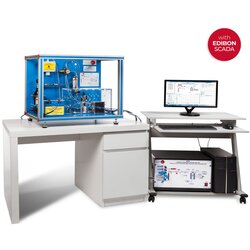Computer Controlled Geothermal Energy Unit with Two-Well System (EGTWC)
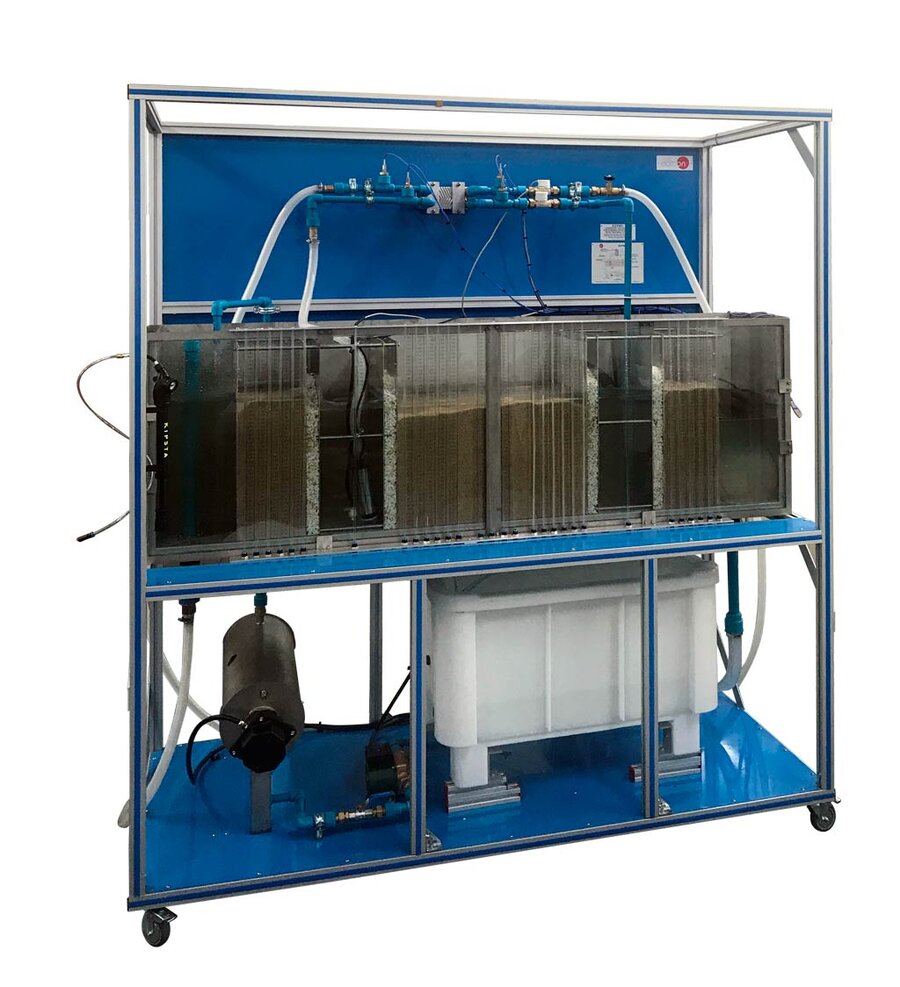


PL-354972
The "EGTWC" Computer Controlled Geothermal Energy Unit with Two-Well System is designed at laboratory scale to explore thermal energy extraction from underground sources. This unit simulates a two-well geothermal system, allowing in-depth study of subsurface heat exploitation.
The system has two primary components: a plate heat exchanger where heat exchange occurs between the external fluid flow and the simulated groundwater, and a transparent main tank for visualizing soil behavior. The tank features a central working section and two side chambers for water inlet and outlet, with a sand bed through which simulated groundwater flows. Flow adjustments can be made through height-adjustable overflows, and manometric tubes allow visualization of fluid dynamics within the simulated soil.
A self-contained water supply tank simulates groundwater, and a computer-controlled pump drives the water into the sand bed's feed chamber. Before reaching the feed chamber, water is heated by a controlled heating element, making it possible to set a specific groundwater temperature. The water then flows through the working section with a production well and an absorption well, separated by filtering materials. In the production well, water is pumped through a plate heat exchanger to transfer thermal energy to an external working fluid. Flow and temperature measurements at both input and output streams allow for precise energy balance calculations.
Tap water from the lab can serve as the working fluid in the exchanger, which exits to the bottom of the absorption well. From there, water flows through the height-adjustable overflow in the outlet chamber back to the supply tank, completing the circuit.
This unit integrates with EDIBON’s SCADA system for full computer control and data acquisition, including the Control Interface Box, Data Acquisition Board, and software packages for monitoring, control, and data management.
- EGTWC. Unit:
- Anodized aluminum frame and panels made of painted steel.
- The unit includes wheels to facilitate its mobility.
- Main metallic elements made of stainless steel.
- Diagram in the front panel with distribution of the elements similar to the real one.
- Sand bed tank measuring 1700 mm x 300 mm x 540 mm.
- Supply tank capacity: 250 l.
- Supply tank level switch.
- Heating tank capacity: 6.5 l.
- Computer controlled pump for groundwater pumping. Qmax: 150 l/min and Hmax: 6 m.
- Plate heat exchanger.
- Temperature sensors to measure inlet and outlet temperatures of the heat exchanger.
- Flow sensor of the working fluid (external flow).
- Groundwater flow sensor.
- Flow sensor of the water driven from the production well.
- Sand filters.
The complete unit includes as well:
- Advanced Real-Time SCADA.
- Open Control + Multicontrol + Real-Time Control.
- Specialized EDIBON Control Software based on LabVIEW.
- National Instruments Data Acquisition board.
- Calibration exercises, which are included, teach the user how to calibrate a sensor and the importance of checking the accuracy of the sensors before taking measurements.
- Projector and/or electronic whiteboard compatibility allows the unit to be explained and demonstrated to an entire class at one time.
- Capable of doing applied research, real industrial simulation, training courses, etc.
- Remote operation and control by the user and remote control for EDIBON technical support, are always included.
- Totally safe, utilizing 4 safety systems (Mechanical, Electrical, Electronic and Software).
- Designed and manufactured under several quality standards.
- Optional ICAI software to create, edit and carry out practical exercises, tests, exams, calculations, etc. Apart from monitoring user’s knowledge and progress reached.
- This unit has been designed for future expansion and integration. A common expansion is the EDIBON Scada-Net (ESN) System which enables multiple students to simultaneously operate many units in a network.
- EGTWC/CIB. Control Interface Box:
- EGTWC/CCSOF. PID Computer Control + Data Acquisition + Data Management Software.:
- Cables and Accessories, for normal operation.
- Manuals: This unit is supplied with 8 manuals: Required services, Assembly and Installation, Interface and Control software, Starting-up, Safety, Maintenance, Calibration and Practices manuals.
EXERCISES AND PRACTICAL POSSIBILITIES TO BE DONE WITH THE MAIN ITEMS
- 1.- Study of the basic principles of low enthalpy geothermal energy.
- Calculation of the transferred thermal power.
- Visualization of the operation of a two-well system.
- Study and analysis of the hydraulic and thermal properties of the soil.
- Determination of the useful thermal power.
- Fundamentals and energy balance of a heat pump.
What is this?
These percentage scores are an average of 0 user reviews. To get more into detail, see each review and comments as per below
If you have used this product, support the community by submitting your review
